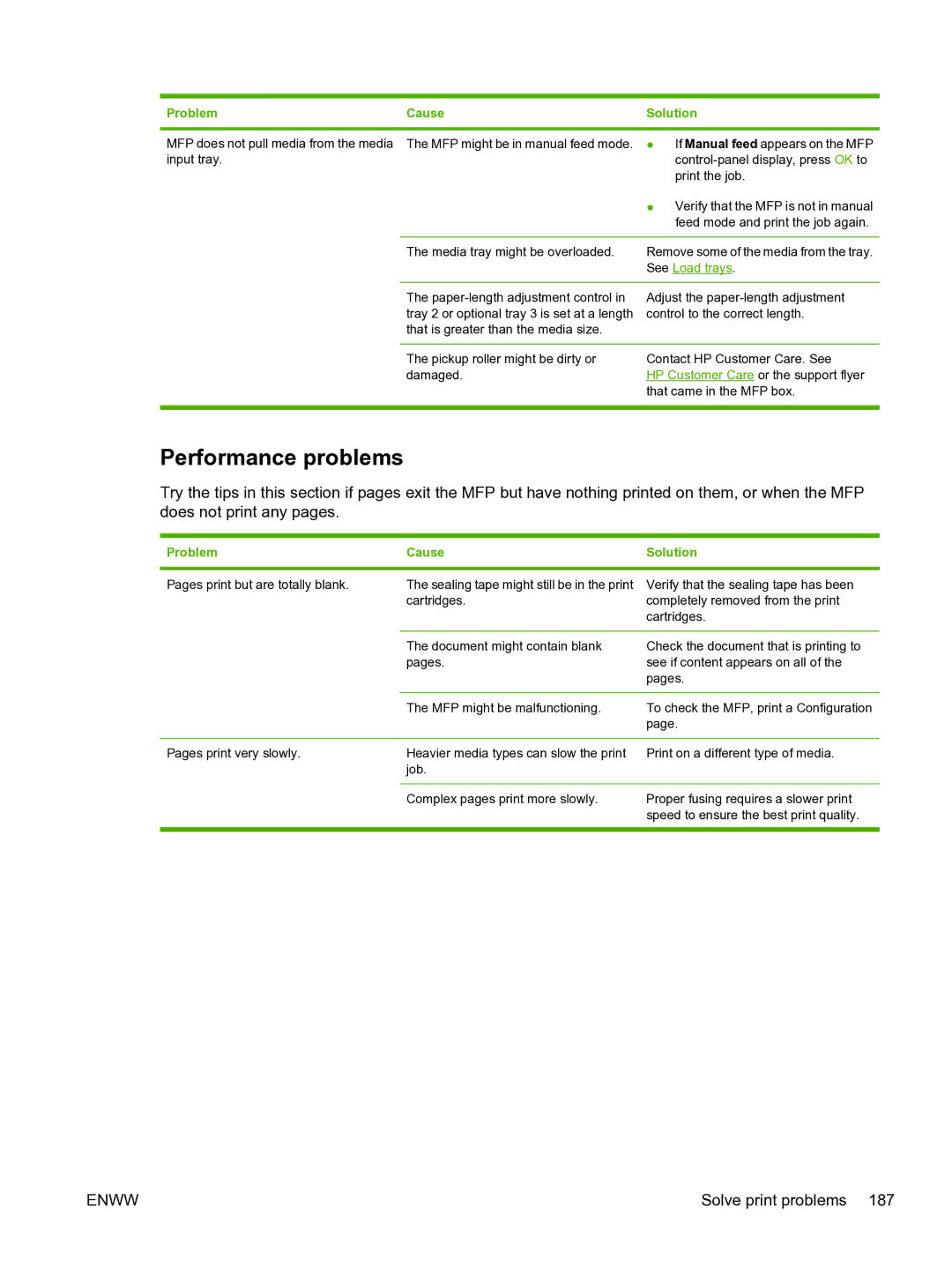
Problem | Cause | Solution |
|
|
|
MFP does not pull media from the media | The MFP might be in manual feed mode. | ● If Manual feed appears on the MFP |
input tray. |
| |
|
| print the job. |
|
| ● Verify that the MFP is not in manual |
|
| feed mode and print the job again. |
|
|
|
| The media tray might be overloaded. | Remove some of the media from the tray. |
|
| See Load trays. |
|
|
|
| The | Adjust the |
| tray 2 or optional tray 3 is set at a length | control to the correct length. |
| that is greater than the media size. |
|
|
|
|
| The pickup roller might be dirty or | Contact HP Customer Care. See |
| damaged. | HP Customer Care or the support flyer |
|
| that came in the MFP box. |
|
|
|
Performance problems
Try the tips in this section if pages exit the MFP but have nothing printed on them, or when the MFP does not print any pages.
Problem | Cause | Solution |
|
|
|
Pages print but are totally blank. | The sealing tape might still be in the print | Verify that the sealing tape has been |
| cartridges. | completely removed from the print |
|
| cartridges. |
|
|
|
| The document might contain blank | Check the document that is printing to |
| pages. | see if content appears on all of the |
|
| pages. |
|
|
|
| The MFP might be malfunctioning. | To check the MFP, print a Configuration |
|
| page. |
|
|
|
Pages print very slowly. | Heavier media types can slow the print | Print on a different type of media. |
| job. |
|
|
|
|
| Complex pages print more slowly. | Proper fusing requires a slower print |
|
| speed to ensure the best print quality. |
|
|
|
ENWW | Solve print problems 187 |
